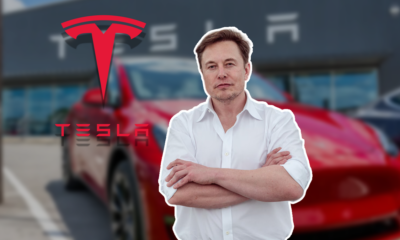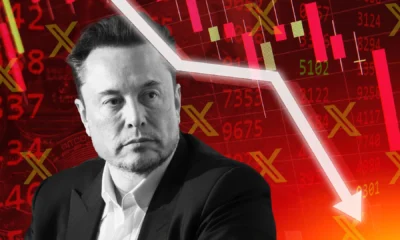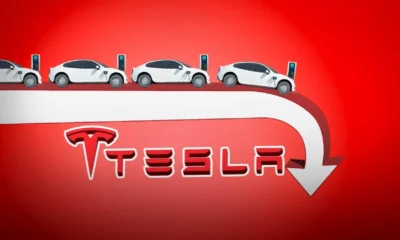Business
Modi’s Ideal Deal With Tesla To Produce Cars In India—But Will And More Importantly Can Tesla Take That Chance?
Published
9 months agoon

When Prime Minister Narendra Modi introduced the ‘Atmanirbhar Bharat’ initiative, the goal was crystal clear—turn India into a global manufacturing powerhouse. The country has already managed to get global tech giants like Apple to ramp up production within its borders. Now, the Indian government has set its sights on Tesla, the EV king, to establish its manufacturing base in the country. But will Tesla bite?
For the longest time, Tesla has played the reluctant suitor, showing interest but never really making a move. However, things seem to be shifting. Reports suggest Tesla is actively recruiting and scouting locations for showrooms in India. This newfound enthusiasm comes after a meeting between Narendra Modi and Elon Musk, sparking speculations about Tesla’s India plans.
India’s EV Tariff Sweetener
In a bid to woo Tesla, India has introduced a new EV policy aimed at making the deal sweeter. Under this policy, import duties on electric vehicles priced over $35,000 have been slashed from a hefty 70% to a more manageable 15%. However, there’s a catch—Tesla must invest nearly $500 million and commit to local manufacturing within a set timeline. The government is set to start accepting applications for this scheme before March-end, giving Tesla a window to jump in.
Ammar Master, South Asia director of Automotive at GlobalData, stated that this move directly aligns with Tesla’s business interests and demonstrates India’s readiness to support EV manufacturing. So, on paper, it seems like a win-win. But is it really?
The Price Problem
One of Tesla’s biggest challenges in India is the price point. According to a research note by Bank of America, even under the new policy, Tesla’s minimum landed car price in India would be around $40,000. That’s steep in a country where existing homegrown EV makers cater to a much lower price segment. Simply put, Tesla’s target audience in India might be too niche to justify large-scale manufacturing.
Additionally, under the EV scheme, Tesla would need to set up a local plant within three years and achieve 50% domestic value addition within five years. Analysts argue that Tesla may not be ready to take on this commitment just yet.
BNP Paribas points out that local production in India would only make financial sense if Tesla can bring down vehicle prices below $30,000, making them affordable for a broader Indian audience. For now, that’s a stretch.
Geopolitical Headwinds
Tesla’s India ambitions might also face geopolitical challenges. A new Donald Trump administration could shift US trade policies, influencing Tesla’s global strategy. In a recent interview, Trump even remarked that Tesla manufacturing in India would be “very unfair.” This political uncertainty adds another layer of hesitation for the automaker.
Moreover, Tesla is already juggling multiple expansion projects, with manufacturing plants under development in Germany and Texas. Prioritizing India while these projects are still unfolding might not be at the top of Tesla’s to-do list.
Testing the Waters First
Industry experts predict that Tesla’s India strategy will be cautious, likely starting with exports rather than immediate manufacturing. “We expect Tesla’s entry into India to be slow and measured, given the low average price point in the market,” BNP Paribas noted.
S&P Global Mobility’s analyst Gupta suggests that Tesla will likely push for even more policy tweaks before making any big commitments. There are already murmurs in local media that India may further adjust its EV policy to accommodate Tesla’s concerns.
Even if Tesla agrees to India’s current proposal, it could take at least six months before any formal commitments are made.

Tesla Stock Drops 8% As European Sales Fall, Elon Musk’s Net Worth Goes Down $15 Billion
Meanwhile, away from India, Tesla had a rough Tuesday as its stock took a sharp nosedive, falling over 8% by midday. Reports surfaced that Tesla’s European sales slumped nearly 45% over the past month, at a time when other EV makers are seeing demand pick up. The market didn’t take kindly to the news, and neither did Elon Musk’s bank account—his net worth plummeted by almost $15 billion in a single day.
At 1:20 p.m. EST, Tesla’s stock price was down to $302.6, marking an 8.4% drop from its opening price. This decline pushed Tesla’s market capitalization down to around $973 billion, a stark contrast to the trillion-dollar valuation it boasted not long ago. For Musk, the impact was personal. His net worth fell nearly 4% to $365.3 billion, a staggering $100 billion below its December 2024 peak.
So, what’s causing this turbulence? It was reported that Tesla’s European sales were at their lowest levels in Germany since July 2021 and in France since August 2022. This comes amid Musk’s increased political involvement, both in the U.S. and Europe, where he has openly backed far-right political parties. Analysts suggest this might be alienating potential buyers, adding another layer of uncertainty to Tesla’s future.
What Are Analysts Saying?
Market experts have been wary about Tesla’s stock since the start of 2025. A note from Wedbush analyst Daniel Ives pointed to Musk’s deepening role in politics—particularly in the Trump administration—as a major factor in the stock’s slump. Musk’s involvement as the unofficial leader of the Department of Government Efficiency (DOGE) has raised eyebrows, with some believing it’s distracting him from Tesla at a critical moment for the company.
“Investors are concerned that Musk dedicating so much time to DOGE takes away from his focus on Tesla,” the Wedbush note stated. It also highlighted the risk of consumers being turned off by Musk’s political affiliations, though analysts currently view this as a “containable brand issue.”
A Political and Financial Tightrope
Musk’s role in the Trump administration has been nothing short of controversial. The DOGE initiative aims to cut government spending and bureaucracy, but its execution has faced heavy criticism. Reports suggest that some of Musk’s Twitter-era management strategies—like making employees submit weekly reports on their productivity—are being implemented in government agencies, much to the frustration of federal workers.
Additionally, Musk and Trump are now dealing with lawsuits and legal challenges tied to their policy moves. All of this uncertainty is making investors jittery, and Tesla’s stock is feeling the heat. The big question now is whether Musk can balance his political ambitions with keeping Tesla on track, or if his distractions will continue to weigh down the company in the long run.
With Tesla’s European sales falling, market volatility, and Musk’s unpredictable moves, 2025 is shaping up to be a defining year for the EV giant.
The Last Bit
Despite the hurdles, India presents an enticing opportunity for Tesla. The Indian EV market is still in its early stages, but it’s growing rapidly.
According to GlobalData, passenger battery electric vehicle (BEV) sales in India are projected to hit 1 million units by 2030, making up 20% of total car sales. With China’s BYD and other EV players expanding aggressively, Tesla might see value in securing an early foothold in India before the competition tightens.
While India is rolling out the red carpet for Tesla, the automaker is unlikely to rush in. The price challenge, investment commitments, and geopolitical factors all suggest that Tesla will take a measured approach, possibly starting with exports before fully committing to manufacturing in India.
The ball is now in Tesla’s court, will Musk take the leap, more importantly can Tesla afford to take the leap and will India have to wait a little longer for the world’s most coveted EV brand to call it home?
You may like
-


After A Tough Year In China, And Plummeting Sales, Can Tesla’s India Gamble Steer It Back On Track Amid Musk’s Controversies?
-


Elon Musk’s Growing Troubles. X Under Scrutiny With Stagnant Growth And Slipping Revenues. Tesla Hacked 4 Times In One Day Even As Tesla Sales In Europe Are Sliding.
-


America Prepares For Trump’s 100 Executive Actions. Is The U.S. Heading Toward Corporate Dictatorship And Will These “Mandates” Lead To Violence And Tension Within America?
-


Tesla In Trouble? Annual Deliveries Dip For The First Time, But China Sales Hit Record Highs—Can Elon Musk’s EV Giant Bounce Back?
-


Honda And Nissan To Merge? Japan’s Auto Industry Hits Reset As Tesla And Chinese EVs Take The Lead
-


Who’s Really Winning The AI Race 2 Years After ChatGPT’s Debut? Hint: It’s Not Nvidia. The AI Race, Why It Matters?
